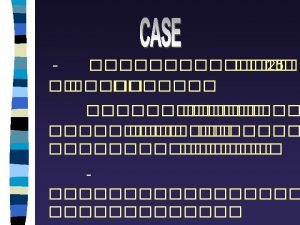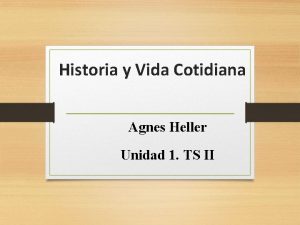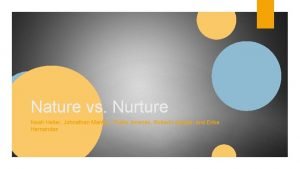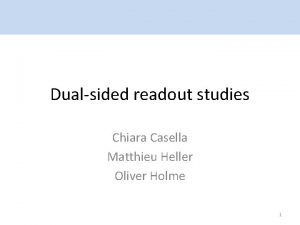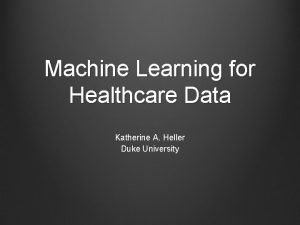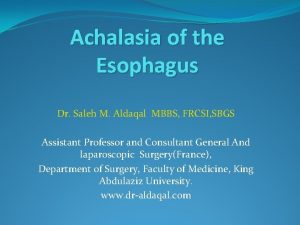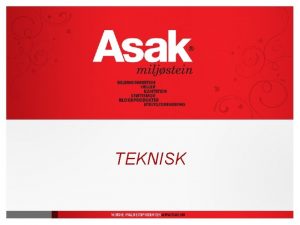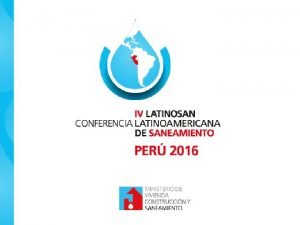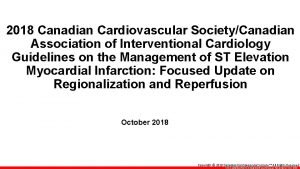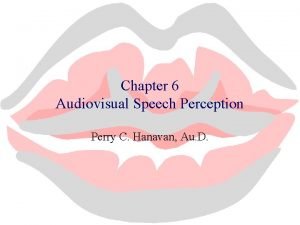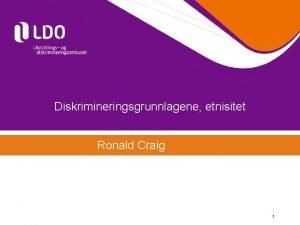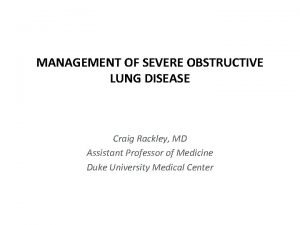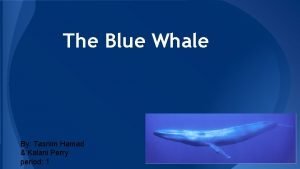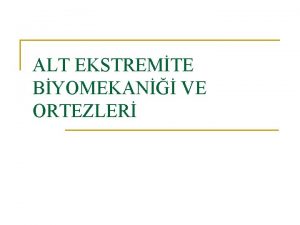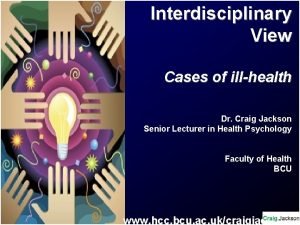David Sadava David M Hillis H Craig Heller





























- Slides: 29


David Sadava, David M. Hillis, H. Craig Heller, May R. Berenbaum La nuova biologia. blu Anatomia e fisiologia dei viventi S

Nutrition, Digestion, and Absorption

What Do Animals Require from Food? Animals are heterotrophs: they derive their nutrition by eating other organisms. Heterotrophs depend on this synthesis and have evolved a variety of adaptations to take advantage of it.

The Human Digestive System

How Is the Vertebrate Gastrointestinal Structure? Tissues of the vertebrate gut are arranged in layers: • Lumen—the gut cavity. • Mucosa—layer of epithelial cells that secrete mucus, digestive enzymes, or hormones; some absorb nutrients through microvilli; in the stomach some secrete hydrochloric acid. • Submucosa—has blood and lymph vessels and nerves.

How Is the Vertebrate Gastrointestinal Structure? • Two layers of smooth muscle are outside the submucosa: • Circular muscle layer • Longitudinal muscle layer

How Is the Vertebrate Gastrointestinal Structure? Nerve nets in the submucosa and between the smooth muscle layers are called the enteric nervous system. The peritoneum is a membrane that surrounds the gut and lines the wall of the cavity. It includes connective and epithelial tissues that secrete lubricating fluids so organs can easily slide against each other in the body cavity.

How Does the Vertebrate Gastrointestinal System Function? Mechanical activity in digestion: • Food is chewed and mixed with saliva. • The tongue pushes a bolus to the soft palate, initiating swallowing —food passes into the esophagus. • Food is kept out of the trachea by the closed larynx and the epiglottis. Chemical digestion: Salivary glands secrete amylase that breaks down carbohydrates.

How Do Animals Ingest and Digest Food? Digestion begins with the teeth. Mammalian teeth: • Enamel, composed of calcium phosphate covers the crown • Dentine, (bony material) in the crown and root • Pulp cavity, contains blood vessels, nerves, and dentine-producing cells

How Does the Vertebrate Gastrointestinal System Function? Peristalsis: waves of muscle contractions that move food toward the stomach. The upper esophagus is skeletal muscle; the rest is smooth muscle. As food reaches the smooth muscle, the esophagus contracts and pushes the food toward the stomach. The lower esophageal sphincter prevents food from moving backward into the esophagus. The pyloric sphincter controls the passage of food into the intestine.

How Does the Vertebrate Gastrointestinal System Function? Gastric pits in the stomach have three types of secretory cells: chief cells, parietal cells, and epithelial cells that secrete mucus. Mucus protects the tissues from the acids and enzymes.

How Does the Vertebrate Gastrointestinal System Function? Chief cells secrete pepsinogen, the inactive form or zymogen of the protease pepsin. The low p. H of the stomach converts it to the active form. Pepsin activates other pepsinogen molecules—a process called autocatalysis. Parietal cells secrete HCl and keep the stomach p. H below 1.

How Does the Vertebrate Gastrointestinal System Function? Segmentation movements: movements of the stomach and small intestine are not as coordinated. Segments of the gut periodically contract but do not generate a peristaltic wave of contraction that moves the food in one direction. Food moves back and forth and mixes with digestive juices.

How Does the Vertebrate Gastrointestinal System Function? Chyme is a mixture of gastric juices and partly digested food. The stomach walls contract and move chyme to the bottom of the stomach. The pyloric sphincter allows small amounts to enter the small intestine. Most chemical digestion occurs in the small intestine. The small intestine has three sections: • Duodenum—the initial section and site of most digestion • Jejunum and ileum—carry out most absorption.

How Does the Vertebrate Gastrointestinal System Function? In humans, the gut wall has folds with finger-like projections called villi. Surface cells of villi have smaller projections called microvilli. The microvilli give the intestine an enormous surface area for absorbing nutrients.

Ducts of the Gallbladder and Pancreas The liver synthesizes bile salts from cholesterol and secretes them as bile. Bile flows through the hepatic duct to the duodenum and through the cystic duct to the gallbladder where bile is stored. Bile salts emulsify fats in the chyme. Lipophilic ends of molecules merge with fat droplets and keep them from sticking together, forming micelles.

How Does the Liver Work? Absorbed nutrients go to the liver. Blood leaving the digestive tract goes to the liver via the hepatic portal vein. The liver controls fat metabolism by lipoprotein production. Lipoproteins transport fats in the blood. • High-density lipoproteins (HDLs) remove cholesterol from tissue and carry it to liver • Low-density lipoproteins (LDLs) transport cholesterol in body • Very-low-density lipoproteins (VLDLs) transport triglycerides to fat cells.

How Does the Pancreas Work? The pancreas is both an endocrine and exocrine gland. Exocrine: it secretes digestive juices to the duodenum via the pancreatic duct. In the duodenum, the zymogen trypsinogen is activated by enterokinase to produce the active protease trypsin. Trypsin can activate other zymogens. The pancreas also secretes HCO 3– to neutralize chyme in the intestine.

Major Digestive Enzymes of Humans In the small intestine, epithelial cells secrete various enzymes to cleave peptides, disaccharides, and lipids. Many humans stop producing lactase after childhood, and cannot digest lactose. The lactose is metabolized by bacteria in the large intestine, causing gas, diarrhea, and cramps.

How Does the Vertebrate Gastrointestinal System Function? Contents of the small intestine pass into the large intestine, or colon. The colon absorbs water and ions and produces feces. Too much water absorption in the colon leads to constipation; too little leads to diarrhea.

How Is the Flow of Nutrients Controlled and Regulated? Digestion is governed by neuronal and hormonal controls. Many autonomic reflexes coordinate activity in different regions of the digestive tract. The enteric nervous system coordinates movement of food; it also exchanges information with the CNS.

How Is the Flow of Nutrients Controlled and Regulated? Digestive hormones: • Secretin from the duodenum causes the pancreas to secrete bicarbonate ions. • Cholecystokinin causes the gallbladder to release bile, stimulates the pancreas, and slows stomach action. • Gastrin is released by the stomach, stimulating stomach movements and secretion of digestive juices.

How Is the Flow of Nutrients Controlled and Regulated? Insulin is released by the pancreas during the absorptive period, when blood glucose rises. Insulin promotes uptake and utilization of glucose for metabolic activities, or synthesis of glycogen and fat. If blood glucose level is very low, glucagon is released and causes the liver to break down glycogen and begin gluconeogenesis.

What Are the Major Diseases? Nutrient deficiency leads to malnutrition; chronic malnutrition leads to deficiency diseases: • Scurvy—lack of vitamin C • Beriberi—lack of thiamin (vitamin B 1); this disease led to the discovery of vitamins • In pernicious anemia, vitamin B 12 (cobalamin) is not absorbed in the stomach. Mineral deficiencies can also lead to disease: • Iodine deficiency leads to hypothyroidism and goiter • Iron deficiency leads to anemia.

How Do Animals Ingest and Digest Food? Heterotrophs acquire nutrition in different ways: • Saprobes absorb nutrients from dead organic matter (e. g. , protists and fungi). • Detritivores or decomposers actively feed on dead organic matter. • Predators feed on living organisms. Digestion usually begins in a body cavity. Gastrovascular cavities connect to the outside through a single opening— jellyfish and other cnidarians. Tubular guts have an opening at each end. A mouth takes in food, and wastes are eliminated through the anus.

How Do Animals Ingest and Digest Food? Food is broken up in the mouth cavity by teeth, radula (snails), or mandibles (arthropods). Most birds have gizzards with small stones for grinding food. Food particles move from the stomach into the intestines. Stomachs and crops are storage chambers that allow for gradual digestion. Most digestion occurs in the intestine; nutrients, water, and ions are absorbed across its walls. The last segment recovers ions and water and stores undigested waste as feces. A muscular rectum expels feces.

How Do Animals Ingest and Digest Food? Surface area is increased in the parts of the gut that absorb nutrients. The earthworm gut has an infolding of the gut wall, or typhlosole. Sharks have a spiral valve—walls of the spiral have a large surface area.

Adapted from Life: The Science of Biology, Tenth Edition, Sinauer Associates, Sunderland, MA, 2014 Inc. All rights reserved
 David sadava
David sadava Mueller hillis maneuver
Mueller hillis maneuver Craig heller
Craig heller Ultrageneralizacion heller
Ultrageneralizacion heller Nature vs nurture examples
Nature vs nurture examples Matthieu heller
Matthieu heller Lex rogata
Lex rogata Annette heller
Annette heller Herman heller
Herman heller Desiree heller
Desiree heller Heller fundraising group
Heller fundraising group Katherine heller duke
Katherine heller duke Heller myotomy
Heller myotomy Grey heller
Grey heller Underlag for heller
Underlag for heller Heller h 4000
Heller h 4000 Léo heller
Léo heller Heller zsolt
Heller zsolt Craig ainsworth cardiology
Craig ainsworth cardiology Professor craig jackson
Professor craig jackson Craig lipreading inventory
Craig lipreading inventory Anti trump
Anti trump Paul craig thompson
Paul craig thompson Revelation song phillips craig and dean video
Revelation song phillips craig and dean video Craig gentry ibm
Craig gentry ibm Ronald craig
Ronald craig Craig rackley
Craig rackley Kalani craig
Kalani craig Lenox hill ortez
Lenox hill ortez Craig jackson illness
Craig jackson illness

